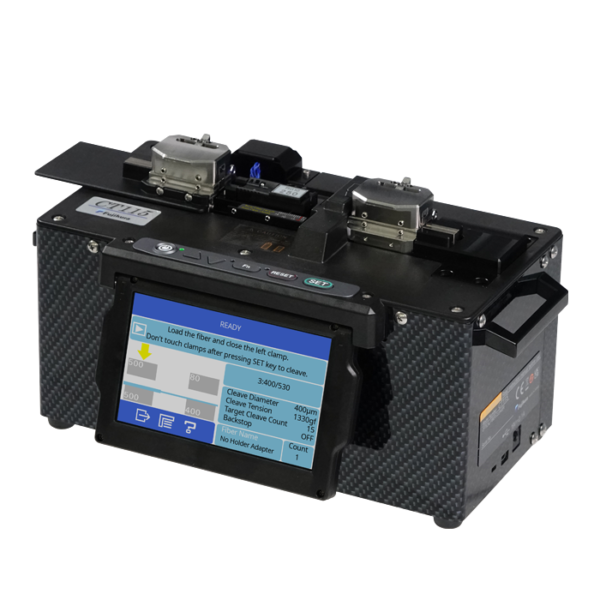Optimize Your Fibre Optic Efficiency: Comprehending Optical Fibre Diameter Analyser Technology
The performance of fibre optic systems is critically influenced by the precision of their size, a variable usually ignored in the search of ideal signal stability. Understanding the modern technology behind optical fibre size analysers discloses the complex balance in between measurement accuracy and production top quality. These gadgets not only boost compliance with sector requirements but additionally provide real-time understandings that can preemptively deal with prospective issues. Nonetheless, the ramifications of their usage extend beyond plain measurement; they can basically change the landscape of fiber optic effectiveness. What factors should one take into consideration to harness their complete potential?
Significance of Optical Fiber Diameter
The diameter of optical fiber plays an essential duty in identifying the performance and effectiveness of communication systems. It affects a number of vital criteria, including the setting of light proliferation, depletion, and bandwidth capability. Bigger diameters commonly enable several light settings, promoting greater data transmission rates. On the other hand, smaller sized diameters tend to support less settings, which can boost signal quality and lower crosstalk.

Furthermore, comprehending the diameter's implications can result in cost financial savings by minimizing the requirement for signal amplification and repeaters in considerable networks (optical fibre diameter analyser). Finally, the significance of optical fibre size can not be overstated, as it straight affects the total effectiveness and integrity of contemporary communication systems

Exactly How Size Impacts Signal Quality
Signal high quality in optical fiber systems hinges considerably on the diameter of the fibre. A smaller sized diameter can lead to greater depletion prices, resulting in signal loss as light trips via the fibre.
Alternatively, larger sizes typically enable enhanced light capture and lowered modal dispersion, boosting signal quality. In multimode fibres, a larger core size can support several light settings, however it may also present intermodal diffusion, which can deteriorate signal top quality. Picking the ideal fibre diameter is critical for achieving the desired efficiency in specific applications.
In addition, the interaction between the fiber diameter and the wavelength of the light made use of plays an essential duty in establishing the efficient transmission range and overall signal integrity. Understanding just how fibre size affects signal quality is crucial for network designers and designers aiming to maximize optical fiber systems for trusted, high-speed information transmission.
Review of Diameter Analyser Modern Technology
In many optical fibre manufacturing processes, precise dimension of fibre diameter is essential for making certain constant efficiency and top quality (optical fibre diameter analyser). Diameter analysers are innovative instruments developed to assess the physical dimensions of optical fibers with high accuracy. They use advanced optical and laser innovations to determine the diameter, ovality, and concentricity of the fiber, hence offering vital information for high quality control
These analysers can run in-line throughout the production procedure or as part of off-line testing protocols. In-line systems enable real-time surveillance, enabling producers to change specifications immediately, consequently maintaining ideal production conditions. Off-line analysers, on the other hand, offer thorough evaluations of batches, guaranteeing that any type of discrepancies from specified resistances are recognized and addressed.
Size analysers considerably add to the reduction of flaws in optical fibres, boosting total product reliability. By consistently gauging essential specifications, these technologies promote compliance with industry standards and specifications. As the need for high-performance optical fibres continues to increase, the duty of diameter analysers ends up being increasingly important in attaining the wanted top quality and performance standards in fibre optic systems.
Secret Functions of Fibre Size Analysers
Although different versions of fiber size analysers exist, they typically share several vital attributes that improve their functionality and integrity. One of the most significant features is high-resolution measurement capacities, which guarantee exact diameter analyses, important for preserving quality control in fibre production. Furthermore, many analysers integrate advanced optical sensing units developed to find minute variants in fibre size, therefore providing vital information for procedure optimization.
An additional crucial attribute is real-time surveillance, enabling drivers to get immediate comments on fibre size throughout the manufacturing process (optical fibre diameter analyser). This capability assists in quick adjustments and minimizes the likelihood of problems. Numerous analysers additionally come equipped with easy to use interfaces, allowing drivers to easily navigate through settings and information outputs
Additionally, durable data storage space and evaluation functionalities are vital for tracking historical efficiency trends and making sure conformity with industry requirements. from this source Some designs even use connection alternatives for integration right into existing production control systems, improving total operational efficiency. Compact and portable designs allow for versatile deployment within manufacturing settings, ensuring that quality assurance procedures are smooth and effective. These features jointly add to the efficiency of fiber size analysers in optimizing fiber optic efficiency.
Ideal Practices for Fibre Optimization

First, routine calibration of optical fibre diameter analysers is crucial. This ensures exact measurements and decreases prospective discrepancies that might affect performance. Next, keeping a clean functioning setting is essential; dust and impurities can result in signal deterioration.
Additionally, it is necessary to choose fibres that meet certain application needs. This entails reviewing aspects such as attenuation, transmission capacity, and ecological conditions. Correct installation methods should additionally be stuck to, consisting of preventing sharp bends and recommended you read extreme stress, which can compromise fibre honesty.
Furthermore, utilizing advanced monitoring systems can help with real-time performance evaluations, allowing punctual identification of issues. Normal screening and maintenance need to be carried out to ensure that fibres stay within optimal operational criteria.
Last but not least, training personnel on the newest fibre optimization technologies and approaches will certainly boost their capability to carry out effective techniques. By complying with these ideal techniques, companies can significantly boost the performance and lifespan of their optical fibre systems, guaranteeing efficient interaction and information transfer.
Final Thought
To conclude, the integration of optical fiber size analyser modern technology is essential for making best use of fiber optic efficiency. By making sure exact dimensions of fiber measurements, these analysers dramatically boost signal top quality and lower losses throughout information transmission. Regular calibration and upkeep of the analysers go to the website are important to maintain optimal efficiency and compliance with industry requirements. Inevitably, the application of this modern technology promotes enhanced data transmission prices and reinforces signal stability, adding to the overall efficiency of fiber optic systems.
Signal top quality in optical fiber systems hinges dramatically on the size of the fibre.In lots of optical fibre production processes, accurate measurement of fibre diameter is crucial for guaranteeing regular performance and top quality. As the need for high-performance optical fibers continues to climb, the role of size analysers becomes significantly crucial in attaining the preferred high quality and efficiency requirements in fiber optic systems.
These features jointly contribute to the effectiveness of fiber diameter analysers in enhancing fiber optic performance.
In conclusion, the combination of optical fiber diameter analyser innovation is crucial for optimizing fibre optic performance.